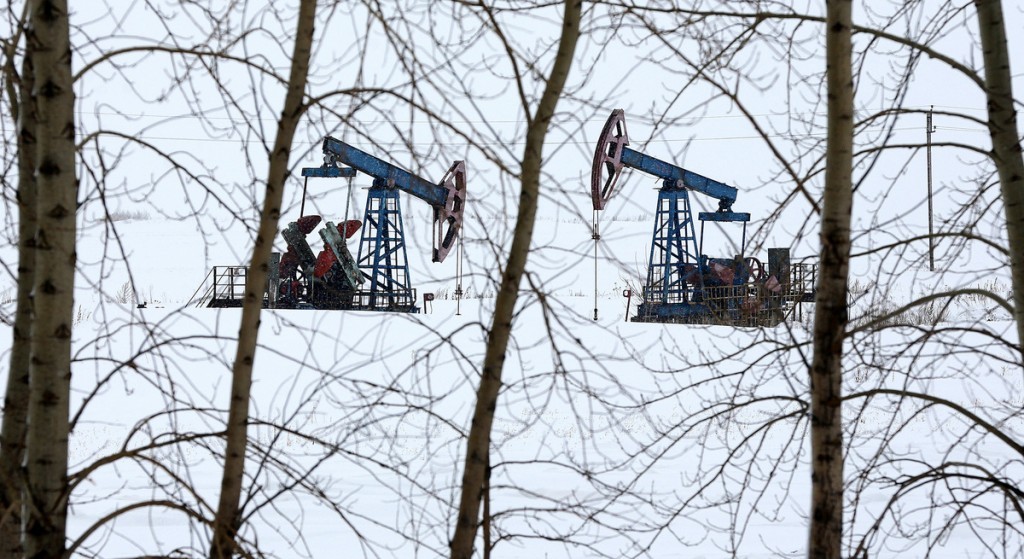
Three days from a crucial meeting, OPEC’s deal to curb oil production and end years of global oversupply hangs in the balance. But even if ministers hash out a meaningful accord on Wednesday, there are dangers for the oil-exporter club.
For two years, OPEC tried to bury a growing army of upstart producers by flooding the markets with crude. Reversing course might hand a lifeline to the battered survivors like Premier Oil Plc who are rushing to reap the rewards.
The London-listed company, whose 60,000 barrels a day of output amounts to a rounding error for OPEC, expects to use hedges to lock in 2017 prices of at least $50 a barrel, a level Brent has only touched briefly this year. That means Premier Oil has adapted well enough to the assault to at least break even at half the price it received on the futures market in 2015.
Across the industry, from rural America to the Siberian tundra, producers are hoping the Organization of Petroleum Exporting Countries will trigger a rally that would allow them to secure funds to boost drilling. Without a deal, prices, now at $47, could test the $30 level breached in January, as OPEC and non-member Russia ramped up output to defend market share, analysts say.
The oil club wants to create a “Goldilocks” zone of between $50 and $60, “high enough to increase revenue for beleaguered oil producers but not too high to trigger a wave of new output from the U.S. shale patch,” said Walid Khadduri, an OPEC watcher at the Arab Gulf States Institute in Washington.
It’s a delicate balancing act.
In November 2014, the Organization for Petroleum Exporting Countries adopted a pump-at-will policy that triggered a price collapse. The group, which supplies roughly 40 percent of the world’s crude, decided to fight for market share through ultra-low prices, targeting rivals such as U.S. shale producers.
Oil tumbled from $110 to a 10-year low of less than $30 this year, forcing producers the world over to slash costs and shelve projects. OPEC, many of whose 14 members are struggling to meet spending commitments, has been debating how to implement a plan announced in September to lift prices by dialing back supply.
The International Energy Agency, formed after the Arab oil embargo in the 1970s, expects global output to surge if crude exceeds OPEC’s price corridor.
“If oil prices rise above $60 a barrel we will see significant production coming,” IEA Executive Director Fatih Birol said in an interview this month.
If so, that would be tantamount to OPEC throwing a lifeline to U.S. shale firms and the other independent producers it tried to bankrupt with low prices.
Saudi Arabia’s new oil chief, Khalid Al-Falih, is trying to walk the fine line of cutting supply just enough to raise prices without triggering a major production push by competitors.
For a Gadfly column on prospects for next week’s meeting, click here.
But even at the lower end of the price range, $50 a barrel, cash-battered companies like London-listed Premier have shown they can survive.
Cost reductions and advances in technology have cut the average price a U.S. oil company needs to break even by a third since 2014, to $53 a barrel, Esther George, the president of the U.S. Federal Reserve Bank of Kansas City, said at an energy conference in Houston last week.
U.S. shale drillers have already benefited from OPEC efforts to lift prices. After the group outlined its plan to cut output in Algiers in late September, crude rallied to a one-year high of almost $55 a barrel, triggering a wave of hedging.
That short-lived spike allowed companies including Pioneer Natural Resources Co., Oasis Petroleum Inc. and Whiting Petroleum Corp. to lock in enough 2017 revenue to expand drilling. Some hedge funds are betting that U.S. shale output will return to month-on-month growth as early as April.
And then there’s Big Oil.
For the past two years, Exxon Mobil Corp., Royal Dutch Shell Plc and most other global giants have been busy cutting costs and scaling back long-term projects. But if prices rise enough, multibillion-dollar, long-life developments may finally get green-lit, said Martijn Rats, an analyst at Morgan Stanley in London.
“There’s a big inventory of delayed projects,” Rats said. “Break-evens have fallen significantly and nobody wants to miss the opportunity.”
BP Plc has already said the final sign-off for Mad Dog 2, a project in the Gulf of Mexico with a budget of about $10 billion, is imminent.
Even so, OPEC can still claim some successes in its campaign to hamstringing rivals big and small. The price collapse derailed the U.S. shale boom, at least temporarily, and forced companies to postpone about $1 trillion of new projects around the world, creating a possible supply hole in the next decade.
But OPEC’s policies now are misguided, according to Ali Al-Naimi, the former Saudi oil minister who masterminded the pump-at-will policy the group adopted two years ago. Trying to drive prices up will only lead to loss of market share, so OPEC should just get out of the way and let capitalism run its course, Al-Naimi said in “Out of the Desert,” his new memoir.
“It was — it is — a simple case of letting the market work,” Al-Naimi said.
Recommended for you
